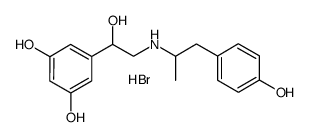Thermodynamics and docking of agonists to the β(2)-adrenoceptor determined using [(3)H](R,R')-4-methoxyfenoterol as the marker ligand.
Lawrence Toll, Karolina Pajak, Anita Plazinska, Krzysztof Jozwiak, Lucita Jimenez, Joseph A Kozocas, Mary J Tanga, James E Bupp, Irving W Wainer
Index: Mol. Pharmacol. 81(6) , 846-54, (2012)
Full Text: HTML
Abstract
G protein-coupled receptors (GPCRs) are integral membrane proteins that change conformation after ligand binding so that they can transduce signals from an extracellular ligand to a variety of intracellular components. The detailed interaction of a molecule with a G protein-coupled receptor is a complicated process that is influenced by the receptor conformation, thermodynamics, and ligand conformation and stereoisomeric configuration. To better understand the molecular interactions of fenoterol analogs with the β(2)-adrenergic receptor, we developed a new agonist radioligand for binding assays. [(3)H](R,R')-methoxyfenoterol was used to probe the binding affinity for a series of fenoterol stereoisomers and derivatives. The results suggest that the radioligand binds with high affinity to an agonist conformation of the receptor, which represents approximately 25% of the total β(2)-adrenoceptor (AR) population as determined with the antagonist [(3)H]CGP-12177. The β(2)-AR agonists tested in this study have considerably higher affinity for the agonist conformation of the receptor, and K(i) values determined for fenoterol analogs model much better the cAMP activity of the β(2)-AR elicited by these ligands. The thermodynamics of binding are also different when interacting with an agonist conformation, being purely entropy-driven for each fenoterol isomer, rather than a mixture of entropy and enthalpy when the fenoterol isomers binding was determined using [(3)H]CGP-12177. Finally, computational modeling identified the molecular interactions involved in agonist binding and allow for the prediction of additional novel β(2)-AR agonists. The study underlines the possibility of using defined radioligand structure to probe a specific conformation of such shape-shifting system as the β(2)-adrenoceptor.
Related Compounds
| Structure | Name/CAS No. | Molecular Formula | Articles |
|---|---|---|---|
 |
Fenoterol hydrobromide
CAS:1944-12-3 |
C17H22BrNO4 |
|
Inhaled Pharmacotherapy and Stroke Risk in Patients with Chr...
2015-01-01 [PLoS ONE 10 , e0130102, (2015)] |
|
[Mechanism of the slow inotropic response of the mouse atriu...
2011-11-01 [Ross. Fiziol. Zh. Im. I. M. Sechenova 97(11) , 1223-36, (2011)] |
|
Contribution of the extracellular cAMP-adenosine pathway to ...
2012-06-01 [J. Pharmacol. Exp. Ther. 341(3) , 820-8, (2012)] |
|
Isolation and characterization of human primary enterocytes ...
2012-11-01 [Scand. J. Gastroenterol. 47(11) , 1334-43, (2012)] |
|
Cannabinoid receptor activation correlates with the proapopt...
2012-10-01 [J. Pharmacol. Exp. Ther. 343(1) , 157-66, (2012)] |